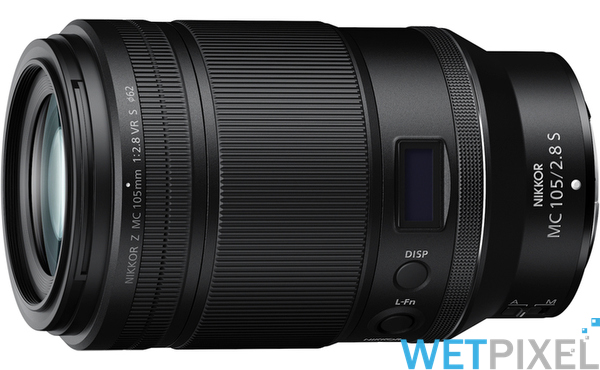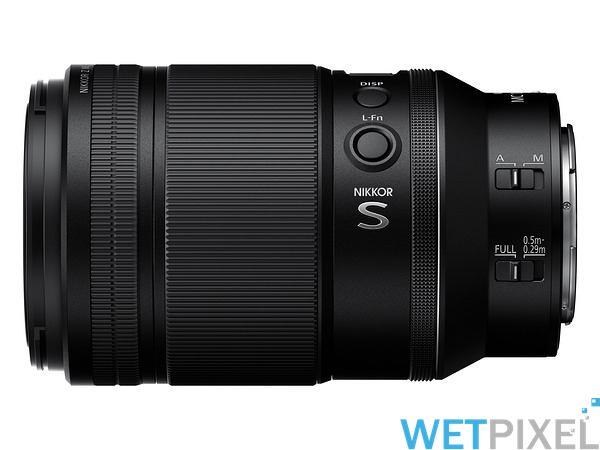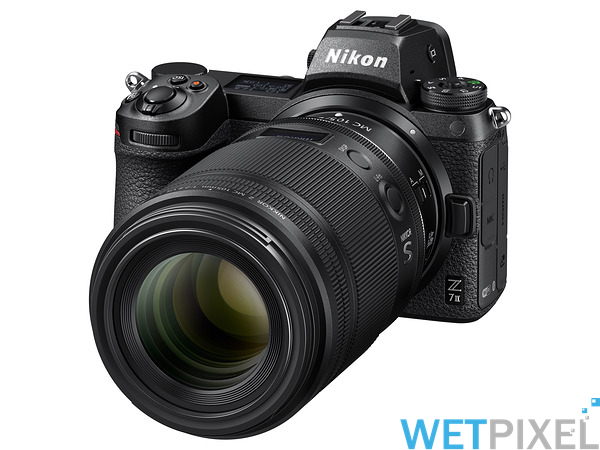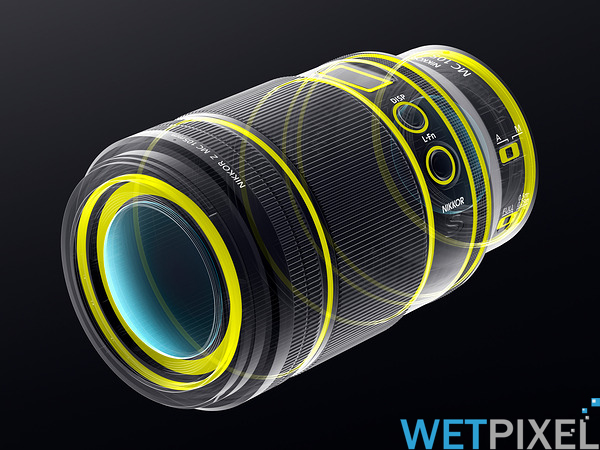Nikon Announces Z Mount 105mm Macro lens

Nikon has announced the Z MC 105mm f/2.8 VR S Micro lens. It is the first macro lens with the Z mount, and this offers a “dramatic improvement in optical performance.” The minimum focus distance is 0.29 m with a 1:1 reproduction ratio, and it is equipped with a new AF stepping motor.
The Nikkor Z MC 105mm F2.8 VR S will be available in late June for a suggested retail price of $999.95.
Press release
Nikon releases the NIKKOR Z MC 105mm f/2.8 VR S, a mid-telephoto micro lens compatible with the Nikon Z mount system
June 2, 2021
Balances superior resolution and beautiful bokeh in the first NIKKOR Z micro lens
TOKYO - Nikon Corporation (Nikon) is pleased to announce the release of the NIKKOR Z MC 105mm f/2.8 VR S, a mid-telephoto micro lens compatible with full-frame (Nikon FX-format) mirrorless cameras for which the Nikon Z mount has been adopted.
The NIKKOR Z MC 105mm f/2.8 VR S belongs to the S-Line*1 of NIKKOR Z lenses, thereby achieving superior resolution while also realizing beautiful bokeh with thoroughly suppressed color bleeding and fringing. The NIKKOR Z MC 105mm F/2.8 VR S and the NIKKOR Z MC 50mm f/2.8, also announced today, are the first NIKKOR Z micro lenses. The NIKKOR Z MC 105mm f/2.8 VR S supports a minimum focus distance of 0.29 m and a maximum reproduction ratio of 1.0 while delivering the high performance required of a mid-telephoto micro lens in a wide variety of scenes, from life-size photography to the capture of landscapes and portraits for which the mid-telephoto focal length is perfectly suited.
Adoption of the Z mount, that takes in abundant light due to its large diameter, realizes optical performance superior to that of the existing F-mount lens with the same focal length and maximum aperture, the AF-S VR Micro-Nikkor 105mm f/2.8G IF-ED. An effective lens structure that uses one aspherical lens element and three ED glass elements, and a multi-focusing system*2 ensure thorough suppression of chromatic aberration from near to far shooting distances. The NIKKOR Z MC 105mm f/2.8 VR S supports the capture of images that express a distinctive contrast between sharp and clear rendering throughout the entire frame and the beautiful bokeh of a micro lens.

The NIKKOR Z MC 105mm f/2.8 VR S is equipped with a new stepping motor (STM) developed for this lens. In combination with the multi-focusing system, extremely fast and precise AF is realized. Smooth and accurate focusing enables stress-free shooting. In addition, the weight of the lens has been reduced by approximately 16% compared to the existing AF-S VR Micro-Nikkor 105mm f/2.8G IF-ED, despite supporting a vibration reduction (VR) mechanism that provides camera shake compensation equivalent to a 4.5-stop *3 increase in shutter speed. The NIKKOR Z MC 105mm f/2.8 VR S is highly operable, as well as strong and durable, offering superior dust- and drip-resistance *4. Further, a new exterior design that pursues a high-quality look and feel has been adopted.

The NIKKOR Z MC 105mm f/2.8 VR S is an ideal lens for professional and advanced amateur photographers, supporting capture of a wide variety of subjects and scenes, from the finest details in plants and insects to portraits and landscapes that utilize its mid-telephoto focal length.
Nikon will continue to pursue new dimensions in optical performance while meeting users’ needs, contributing to the ongoing development of imaging culture with the hope of further expanding the possibilities for imaging expression.
*1 The S-Line is a grade of NIKKOR Z lenses that demonstrate outstanding optical performance, adhering to a high standard of design principles and quality control.
*2 Multiple AF drive units work together to control the position of multiple focus lens groups with great precision for superior image formation performance regardless of shooting distance.
*3 Measured in accordance with CIPA standards at a vibration reduction setting of NORMAL. The effectiveness of vibration reduction decreases as the shooting distance decreases.
*4The lens is not guaranteed to be dust- and drip-resistant in all situations or under all conditions.

Primary features
- Adoption of the large-diameter Z mount has enabled a dramatic improvement in optical performance compared to the existing AF-S VR Micro-Nikkor 105mm f/2.8G IF-ED.
- Balances high resolution from near to far shooting distances and beautiful bokeh with thoroughly suppressed color bleeding and fringing.
- Shooting is possible for a wide variety of scenes, including landscapes and portraits that maximize the mid-telephoto focal length and superior resolution, not just macro photography.
- Chromatic aberration is thoroughly suppressed through the adoption of an optical structure that includes one aspherical lens element and three ED glass elements, as well as a multi-focusing system.
- Ghost and flare are effectively reduced by utilizing Nikon’s exclusive Nano Crystal Coat and ARNEO Coats
- Extremely fast and precise AF control is achieved by using a newly developed stepping motor (STM) and multi-focusing system.
- Equipped with a focus limiter* function that reduces focusing time during close-up shooting by limiting the focus range.
- The intended focus is achieved via an electromagnetic diaphragm mechanism that enables high-precision aperture control, and improvements to MF operability.
- Equipped with a highly effective 4.5-stop optical vibration reduction (VR) function.
- Achieves high dust- and drip-resistance, superior reliability that comes from robustness and weather resistance, and excellent anti-fouling performance achieved with the adoption of a fluorine coat.
- Approximately 16% lighter than the existing F-mount model.
- Equipped with a control ring to which functions such as aperture or exposure compensation can be assigned.
- Responds to video recording needs by achieving smooth changes in brightness, enabling the recording of natural footage.
- Adoption of the new NIKKOR Z design that features a new S-Line emblem and high-quality body texture.
*Update the camera firmware to the latest version. With earlier versions, the camera may fail to detect the lens correctly and some features may not be available.